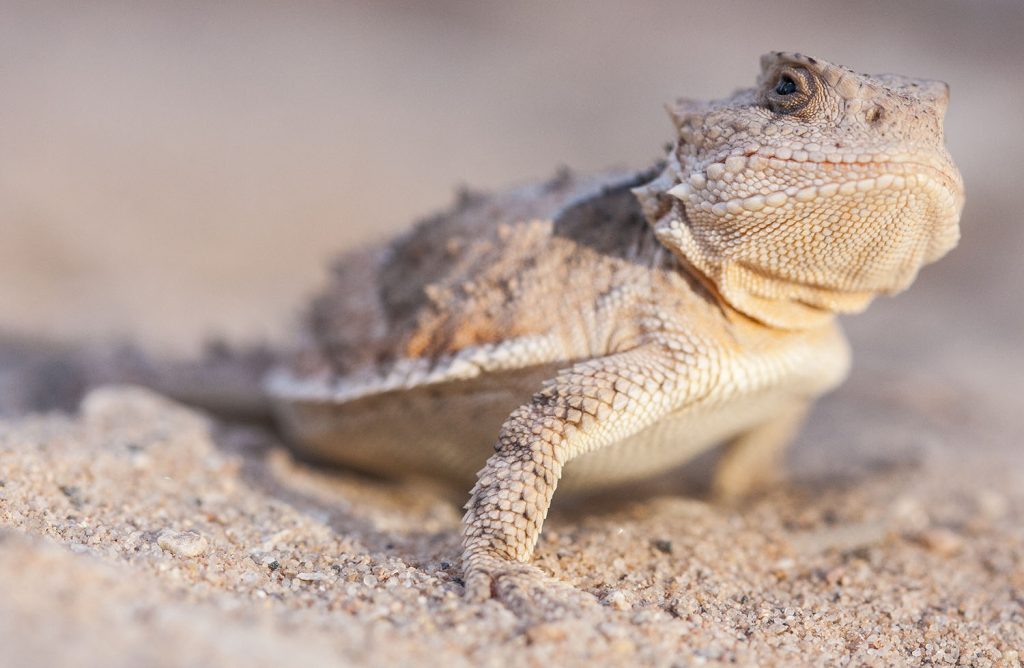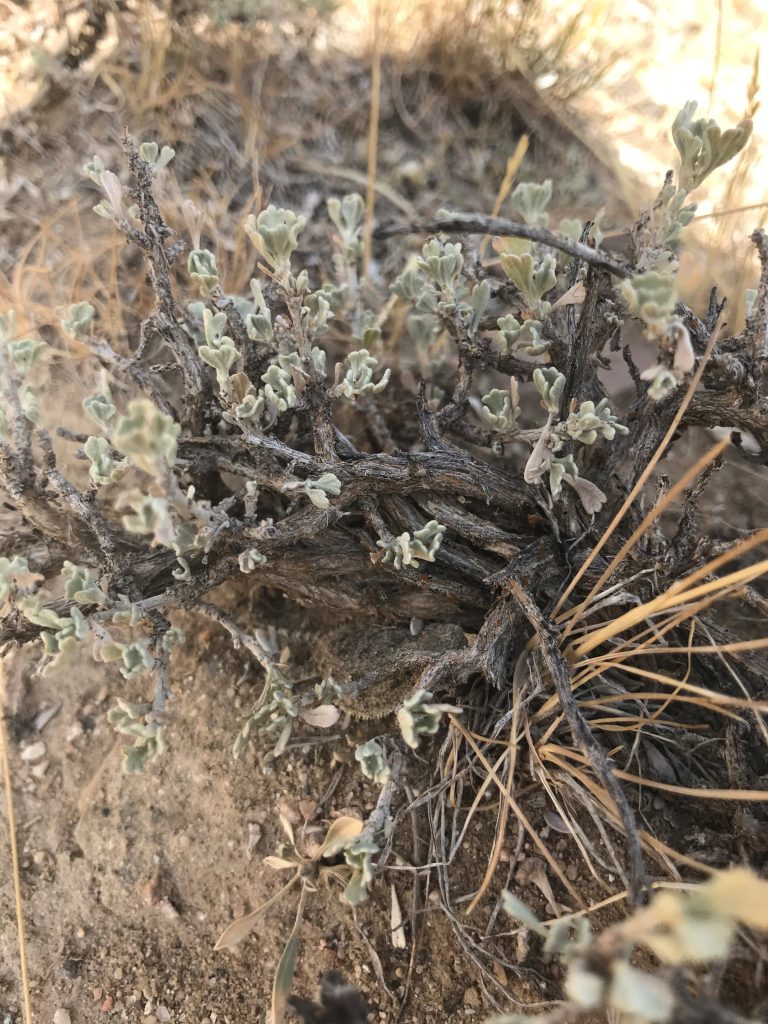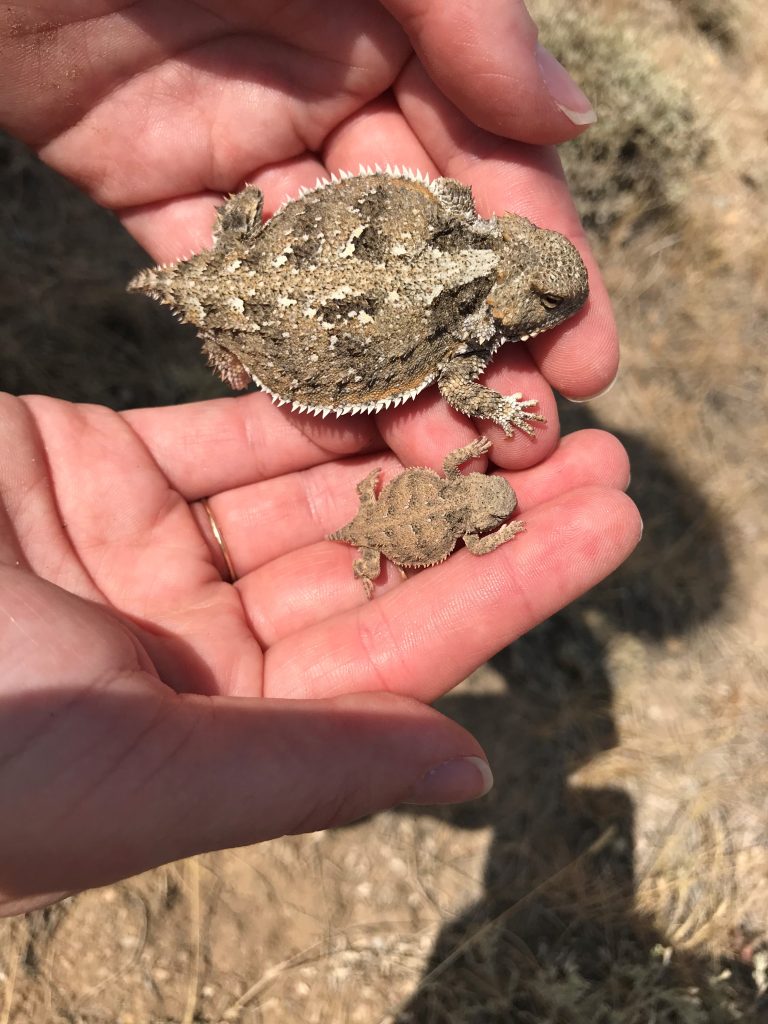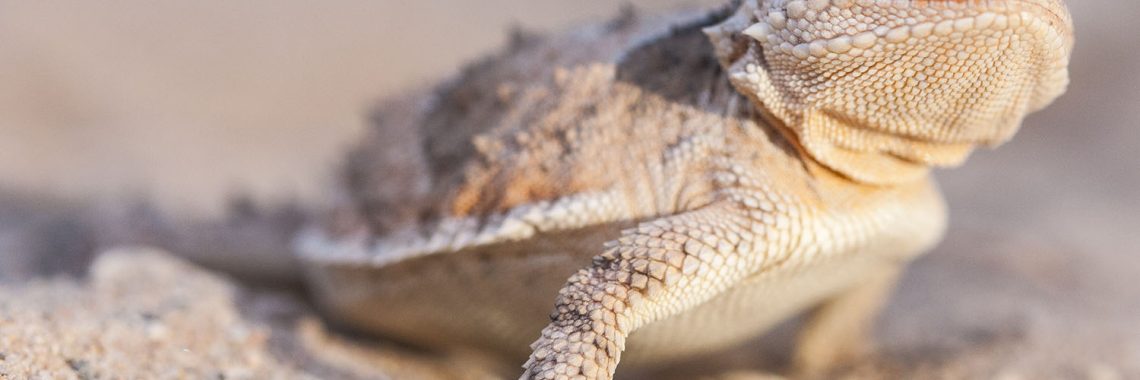
It’s covered in spikes, effortlessly eats stinging ants, and possesses the ability to shoot blood from its eyes.
This is no mythical creature, but Wyoming’s state reptile: the greater short‑horned lizard (Phrynosoma hernandesi).
Horned lizards are sometimes called “horny toads.” Although inaccurate, the moniker is consistent with their scientific name, Phrynosoma, which means “toad‑bodied.” While most lizards have long tails and long, slender bodies, horned lizards have more of a toad‑like appearance with short tails and a round, wide body.
Their characteristics
Their body shape accommodates their diet. Horned lizards are ant specialists. Ants comprise approximately 41 percent of the greater short‑horned lizard’s diet. Since ants are not very nutritious, horned lizards have to eat a large number each day, and those ants need a lot of stomach space to get digested.
The greater short‑horned lizard is one of the few that births live young among the 17 horned lizard species found from Canada to southern Mexico. The eggs develop inside the mother where they stay warm and protected in Wyoming’s cool climate. They hatch within her body, and she usually gives birth to five to 20 live young, although as many as 48 have been recorded. The young, about the size of a nickel, have a tough life ahead. As both babies and adults, horned lizards are prey for many species, including raptors, snakes, coyotes, and bobcats.
Lizard lore
The greater‑short horned lizard is the only species of horned lizard found in Wyoming. They are spread throughout most of the state, although their populations are suspected to be declining. They can be found in a variety of habitat types from semiarid plains to the mountains, up to approximately 10,000 feet in elevation. They are usually active from May to October before they dig into the loose soil to spend their winters. It is estimated that they overwinter around 3 feet under the surface in order to be below the frost line.

Defense strategies
Depending on the predator, horned lizards have several defense strategies to prevent themselves from becoming a tasty snack. A horned lizard will stay still and rely on its camouflage to keep hidden. Scales often closely match the color of the soil or rocks that dominate their landscape, allowing the horned lizard to blend in almost seamlessly with their habitat.
If caught, adult horned lizards will puff up with air, driving the spikes that cover their skin into the mouth or throat of whatever is trying to snack on them. They will also lean their heads back and move it side to side, digging their horns into the soft tissue of the predator’s mouth or throat.
Sometimes, horned lizards will just flee. This is a particularly common defense strategy for baby horned lizards, who do not have spiky skin or horns to protect themselves if caught. In sagebrush dominated habitat, the babies sometimes flee up into the base of sagebrush plants, making it extremely difficult for a predator to find and extract them.
All of these are pretty interesting defense mechanisms, but what the horned lizard is famously known for is its ability to shoot blood from its eyes! There is a sinus just under horned lizards’ eyes that fills with blood and pressurizes, forcefully expelling the blood in a stream that can travel over 3 feet away.
A cool party trick, for sure, but how does this actually protect the horned lizard? It is hypothesized the blood of a horned lizard tastes foul because of all the formic acid they consume from their ant‑centric diet. The horned lizard will direct this spray of blood at a feline or canine predator’s mouth. The foul, bitter taste repulses and distracts the predator, giving the horned lizard a chance to escape to safety.
This spring or summer, see if you can spot the state’s coolest symbol! Remember that horned lizards are best observed in the wild; due to their diet and strict habitat requirements, they do not make good pets. You can upload pictures of horned lizards you find to iNaturalist (www.inaturalist.org) or send them to the Horned Lizard Conservation Society (www.hornedlizards.org).
Mason Lee is the senior project coordinator with the University of Wyoming Biodiversity Institute in Laramie. Lee can be reached at mlee37@uwyo.edu or (307) 766-6240.
Excerpted from the Winter 2022 issue of Barnyards & Backyards magazine.






